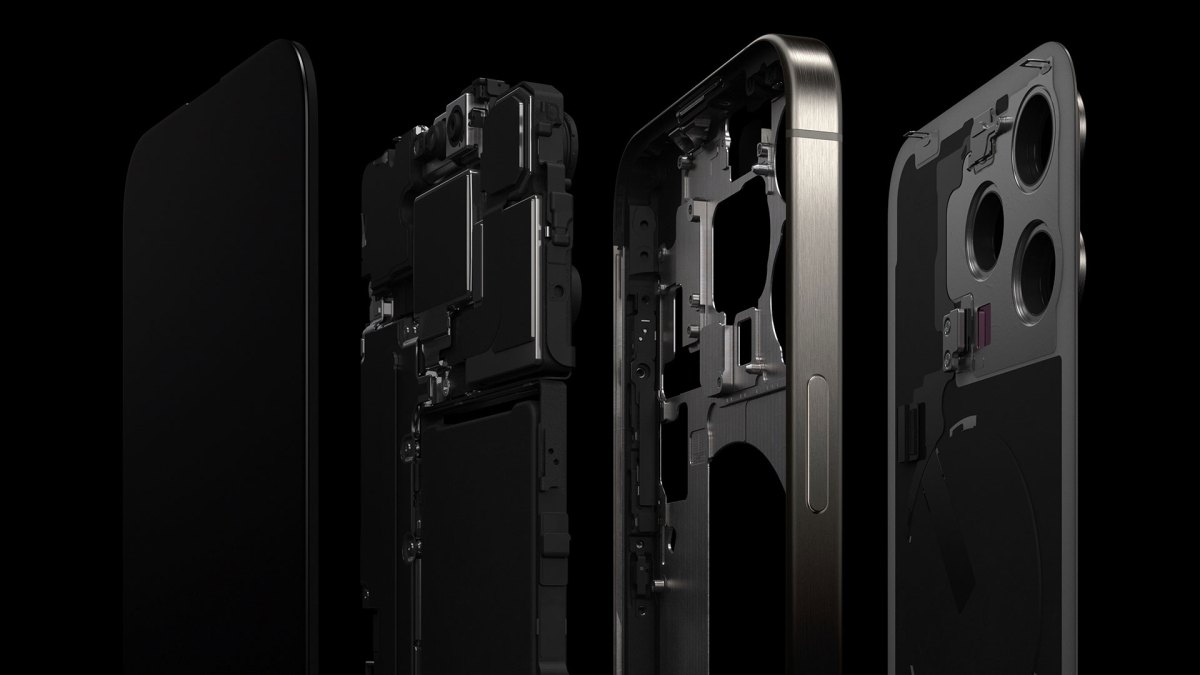
It wasn’t long ago that Apple products routinely raised the ire among repairability advocates. The iPhone maker has more fully embraced user repairability in recent years, owing, in part, to both sustainability concerns and the growing right to repair movement. Actions like parts pairing continue to rankle critics, including iFixit, which retroactively dropped the iPhone 14’s repairability score late last year over the policy.
In the simplest terms, parts pairing requires a specific component (in this case, first-party) for a device to function as intended. A new white paper released Wednesday offers the most in-depth glimpse of Apple’s current repair policy. Titled “Longevity By Design,” the study highlights a prioritization of durability over repairability.
“The ability to repair a device and access repair services are important considerations when designing long-lasting products,” Apple SVP of Hardware Engineering John Ternus states in the study. “However, optimizing for repairability alone may not yield the best outcome for our customers or the environment.”
Ideally, the notions of repairability and durability ought not be in conflict. The perfect device is one that never breaks in the first place, while still allowing for easy user repair access when needed.
Apple notes that subsequent generations of iPhones have increasingly focused on device repairability. That was certainly evident with 2023’s iPhone 15. Unsurprisingly, iFixit’s subsequent teardown was a mixed bag, once again pointing to parts pairing as a major concern. The site ultimately awarded the device a 4/10 repairability score.
Meanwhile, Apple has continued to expand its user repair service. On Wednesday, the company announced that Diagnostics for Self Service Repair is now available in 32 European countries. The list includes the U.K., France, Germany and the Netherlands. Introduced in December, the feature delivers diagnostics to users that had previously only been available to Apple Authorized Service Providers and Independent Repair Providers.
Self Service Repair has, too, has received a mixed reaction from critics. In April, Apple announced that iPhone customers and shops will be able to access used components for repairs. The company is also quick to note that it doesn’t block the use of third-party parts, but in some cases those non-Apple parts will not have the same system access.
“‘Parts pairing’ is used a lot outside and has this negative connotation,” Ternus told me at the time. “I think it’s led people to believe that we somehow block third-party parts from working, which we don’t. The way we look at it is, we need to know what part is in the device for a few reasons. One, we need to authenticate that it’s a real Apple biometric device and that it hasn’t been spoofed or something like that. … Calibration is the other one.”
Apple’s stance on the matter is the use of third-party biometrics could pose a security risk, while non-properly calibrated components like displays may result in an inferior experience.
In the new paper, the company argues that prioritizing longevity over repairability is ultimately the better move for sustainability. It’s fair to assess the individual impact based on specific components. After all, longevity, reliability and user-repairability aren’t consistent across components.
Here Apple explains that displays and batteries are more likely than other components to require repair. Until the day the indestructible screen arrives, then, it makes sense to make these components among the easiest for users to repair. To contrast this, Apple points to the more complicated carbon math around charging ports.
Apple writes,
[P]rioritizing repairability can be misguided when the need for service is infrequent — an internal case study on the iPhone charging port helps to demonstrate this. The iPhone charging port is part of a highly durable module that includes microphones and other components that can be repaired as a unit, but rarely requires replacement. Making the charging port individually replaceable would require additional components, including its own flexible printed circuit board, connector, and fasteners that increase the carbon emissions required to manufacture each device. The higher manufacturing carbon emissions are only justified if the charging port requires replacement in at least 10% of devices. In fact, the actual service rate was below 0.1%, meaning Apple’s existing design approach yields lower carbon emissions over the lifetime of the device.
Apple also uses the new white paper to swipe back against longstanding accusations of planned obsolescence with iPhones and other devices.
“There are hundreds of millions of iPhones that have been in use for more than five years — and that number is still growing,” Apple writes. “And while some of our competitors are just starting to promise multi-year OS updates for their products, Apple pioneered the practice of providing free updates to our consumers over a decade ago to keep products lasting longer.”
The “competitors” part is a bit of a swipe at companies like Google, which introduced five years of Android security patches for Pixel 6 and 7 devices in 2021. Ultimately, however, any policy that allows users to continue to safely use older devices is a net positive.
